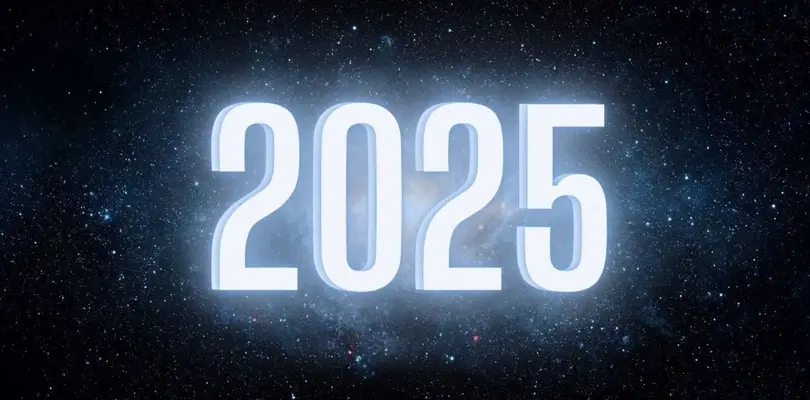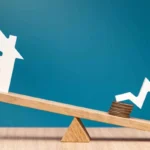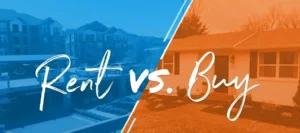If you are a Veteran preparing to buy your first home in 2025, this comprehensive guide will walk you through the latest VA home loan program updates—so you can feel confident, informed, and empowered.
Despite the backdrop of elevated interest rates, the benefits of VA loans can offset many challenges and make homeownership a realistic goal. With higher loan limits, new options to pay certain fees, and enhanced renovation loans, Veterans can secure properties that meet their unique needs and budget.
This article addresses what these changes mean, how to take advantage of them, and what action steps to follow so you can achieve the dream of homeownership on your terms.
In this Article
Key Updates in 2025
- Increased Loan Limits: VA loans now cover up to $806,500 in most areas and up to $1,209,750 in designated high-cost regions.
- Buyer-Broker Fees: Veterans can now pay certain broker fees, giving you a more competitive edge in a fast-paced housing market.
- VASP Program Ending: The VA’s foreclosure assistance program (VASP) will end May 1, 2025, but other forms of support remain available.
- No Down Payment, No PMI: Major cost-saving features of VA loans that can make homeownership more affordable.
- Rates Around 5.875%: Even though rates are relatively high, VA loan benefits can help manage monthly mortgage payments and build equity quickly.
For a practical illustration, imagine a $300,000 loan at a 5.875% interest rate. Your monthly principal and interest payment might be around $1,774. With annual home value growth at about 5%, you could see $14,000 in equity in a relatively short time. Below, you’ll discover how to navigate these new 2025 updates, understand the advantages they offer, and make the most of your VA loan eligibility.
What’s New in 2025?
The VA home loan program has been a cornerstone for Veterans since its establishment in 1944, and it continues to adapt to changing market conditions. This year, interest rates hover around 5.875%. Although that figure is higher than some Veterans may remember from earlier years, updated VA loan features help make the path to owning your first home less daunting.
Higher Loan Limits
The Federal Housing Finance Agency (FHFA) has raised conforming loan limits to $806,500 for most U.S. areas, an increase of about 5.2% from 2024’s limit of $766,550. In higher-priced areas—such as select counties in California and New York—the maximum can reach $1,209,750. For eligible Veterans, these higher limits mean you can purchase a wider range of homes without resorting to jumbo loans, which typically require larger down payments and come with higher interest rates.
For instance, if you’re eyeing a $350,000 home in San Antonio, it now fits comfortably under the standard VA loan limit. With interest rates hovering at around 5.875%, your monthly principal and interest could be roughly $1,988—potentially affordable for many first-time buyers transitioning from military to civilian life.
Buyer-Broker Fee Flexibility
Another noteworthy change is that, since June 2024, Veterans have been allowed to pay certain buyer-broker fees. In the past, VA guidelines prohibited Veterans from paying some of these fees, which could make offers look less competitive in hot markets. According to a VA Press Release, this shift came in response to a settlement from the National Association of REALTORS® and was designed to level the playing field.
Covering buyer-broker fees—often in the range of $2,000 to $5,000—could help your bid stack up more favorably against those from non-VA buyers, especially in high-demand areas where multiple offers are the norm. This advantage is particularly significant if you’re in competitive neighborhoods like Alamo Heights, where properties can attract several qualified buyers in a short timeframe.
VASP Program Shutdown
The Veterans Affairs Servicing Purchase (VASP) program—credited with helping over 17,000 Veterans avoid foreclosure by purchasing delinquent VA-backed loans—officially ends on May 1, 2025 (Stars and Stripes). Some policymakers believed the program put taxpayer funds at risk and pushed for its discontinuation. Though this change might worry those who are struggling to make mortgage payments, there are still alternatives if you face financial hardship. The VA Home Retention Program offers counseling, forbearance options, and other forms of support. The key is to act quickly at the first sign of trouble, rather than waiting until you’ve missed multiple payments.
Renovation Loan Enhancements
For many first-time buyers, especially Veterans considering older homes, the VA’s renovation loans can be a game-changer. These loans allow you to bundle the cost of your home purchase and renovation into a single mortgage. For instance, if you find a $250,000 home in need of $50,000 worth of repairs, you can finance a total of $300,000 through one loan. With rates around 5.875%, your monthly principal and interest might be near $1,705. This approach can be incredibly helpful if you’re eyeing a property that doesn’t initially meet the VA’s Minimum Property Requirements but has strong potential once fixed up.
First-Time Buyers: Why VA Loans Shine
Many first-time buyers transitioning out of the Military might feel overwhelmed about buying a home, but VA loans bring unique advantages that can simplify the process. Even with interest rates around 5.875%—marginally lower or higher depending on your lender and credit profile—VA loans continue to help thousands of Veterans find stable, affordable housing.
- Zero Down Payment: You typically don’t need a down payment, which can be a huge relief if you’re just getting settled after military service. Other common loan types like FHA often require 3.5% down, while conventional mortgages might need 5% or more.
- No Private Mortgage Insurance (PMI): Avoiding monthly PMI can save you $100 to $200 per month compared to many conventional loans.
- Flexible Credit Requirements: While each lender sets its own criteria, a credit score of around 620 is often acceptable. Some lenders may go lower if other financial factors are strong.
- Competitive Interest Rates: VA loan rates can be significantly lower than conventional mortgages, potentially saving you hundreds of dollars a year.
For example, a Veteran buyer in Leon Valley might land a $270,000 home at a 5.875% interest rate, resulting in a monthly principal and interest payment close to $1,530. Since VA loans allow for zero down payment, you conserve your savings for moving expenses, a rainy-day fund, or future renovations.
Navigating 2025’s Market
The 2025 housing market still shows signs of being competitive, with continued low inventory in certain regions. Interest rates are forecasted to remain around or above 6% throughout the year, driven by factors like persistent inflation and steady job growth (Forbes). While some Veterans might be tempted to wait for rates to drop, property values in many parts of the country could keep rising. For instance, a home priced at $283,000 now could increase to $297,000 or more by 2026 if a 5% annual growth rate persists.
VA loans can help offset these market challenges with their no-down-payment advantage and more forgiving credit requirements. Another angle to consider is refinancing down the line. If rates fall from, say, 5.875% to 5.0% or lower in a year or two, a refinance can translate into substantial monthly savings. Programs like the VA’s Interest Rate Reduction Refinance Loan (IRRRL) make refinancing easier for qualified borrowers.
Tips for First-Timers
- Boost Your Credit Score: Prioritize paying down high-interest credit card debt, even if you can manage only a few hundred dollars at a time. Moving from a 620 credit score to a 640 could get you a slightly better rate, improving your monthly cash flow.
- Shop Around for Lenders: Compare multiple lenders—such as Navy Federal Credit Union and Veterans United—to find the lowest rate and best terms. A seemingly small difference (like 5.875% vs. 6.0%) can save you $50 or more per month.
- Lock in Your Rate: If you find a favorable rate, consider locking it to protect yourself against potential rate hikes in the coming weeks or months.
- Set a Realistic Budget: Calculate your debt-to-income (DTI) ratio. Many lenders prefer a DTI at or below 43%. For example, if you earn $4,000 per month and pay out $1,800 in existing debts, aim for a monthly mortgage payment around $1,705 or below.
If you feel uncertain about any of these steps, consider working with a housing counselor who specializes in VA loans. Many nonprofits and local Veteran service organizations offer free or low-cost counseling to help you navigate the process and improve your financial readiness.
Actionable Steps to Buy
To ensure you make the most of your VA loan benefit, follow this straightforward sequence:
- Verify Eligibility: Confirm you qualify for a VA loan by checking your Certificate of Eligibility (COE) on VA.gov. This step takes just a few minutes if you have your service documents handy.
- Get Pre-Approved: Provide income statements, credit information, and other relevant financial details to your chosen lender. You could secure pre-approval for a $300,000 loan with a monthly payment near $1,705 in about 7–14 days.
- Find a VA-Savvy Real Estate Agent: Seek out a realtor experienced with VA transactions, especially if you’re considering paying buyer-broker fees. A knowledgeable agent will also help you spot homes suited to the VA’s Minimum Property Requirements.
- Search for Homes: Narrow your search to properties within your comfort range. For many first-time Veteran buyers, this might be between $250,000 and $350,000, translating to monthly principal and interest payments between $1,420 and $1,988.
- Close on Your Home: Once you’ve found a place, expect a closing timeframe of about 30–60 days. Closing costs often range from $4,000 to $6,000, though you may be able to roll some of these fees into the loan.
Real Vet Wins
Below are a few scenarios showing how the latest 2025 VA loan features can work in real life for those who have served:
- $300,000 in Leon Valley: Monthly payment is around $1,705 at 5.875%, with zero down payment. The homeowner gained $14,000 in equity after a moderate market appreciation.
- $250,000 in Poteet: About $1,420 per month, with the ability to cover buyer-broker fees to strengthen the offer. Enjoy living near local festivals while building equity.
- $350,000 in Alamo Heights: Roughly $1,988 per month, still within updated loan limits. Home equity grew by $17,000 in a fast-rising market.
- $280,000 in Selma (Renovation Loan): Combined purchase and repair costs financed in one loan for around $1,590 per month. This buyer fixed a leaky roof and immediately boosted property value.
These stories highlight how quickly the advantages of a VA loan can help you build equity and enhance your overall financial picture. Consider connecting with other Veterans who have gone through this process—they can offer tips and perspective that resonate with your Military background.
Pitfalls to Avoid
While VA loans come with powerful benefits, you’ll still want to keep a watchful eye on potential pitfalls. Here are a few to keep in mind:
- High Debt-to-Income Ratio: If you earn $4,000 per month but have $2,000 in monthly debt, you’re already at a 50% DTI. Many lenders prefer 43% or less. Paying off a smaller monthly debt (e.g., a $200 credit card payment) could be the difference between getting approved or denied for $300,000.
- Lack of COE Early On: Some Veterans forget to secure their Certificate of Eligibility at the start. Without it, you might stall mid-transaction, risking the property you want. Get your COE from VA.gov before you house-hunt.
- Overextending Your Budget: Just because you qualify for $400,000 doesn’t mean you should max out. A monthly payment around $2,274 might strain a $5,000 monthly income when you factor in all other expenses. Staying at a more comfortable $300,000 or $350,000 limit can help you maintain financial stability.
- Forgetting Closing Costs: Even with zero down payment, closing costs average between $4,000 and $6,000. Plan ahead, or consider wrapping these into your total loan amount if the lender allows.
What’s Next?
Once you’ve settled into your new home, it’s important to look ahead at ways to optimize your mortgage and use any growing equity:
- Refinance Opportunities: If rates drop from 6.5% to 5.875% or lower, you could see hundreds in monthly savings. The VA’s Interest Rate Reduction Refinance Loan (IRRRL) program can streamline this process.
- Equity Growth: If property values climb by around 5% each year, a $283,000 home could be worth $297,000 in just 12 months, offering you $14,000 in potential equity for future investments or upgrades.
- Second VA Loan: Depending on your remaining entitlement, you could use a second VA loan if you decide to move or invest. The updated loan limit of $806,500 in most areas grants you considerable flexibility.
- Renovations and Upgrades: Thinking of turning your starter home into your “forever home”? A VA-backed renovation loan or a refinance could be used to fund repairs and improvements, increasing comfort and home value.
If you’re not sure which option is best for your situation, speak with a VA-specialized lender or financial advisor. Local Veteran service organizations can also point you toward free or low-cost consulting services. Early planning and staying informed can make all the difference in building long-term financial security.
FAQs About 2025 VA Home Loan Program Updates
What are the 2025 VA loan limits?
For most areas, the limit is $806,500, while high-cost areas see limits up to $1,209,750. This means that a $300,000 loan (approximately $1,774 per month) can comfortably fit under these new caps (FHFA News).
Can Veterans pay broker fees now?
Yes. Since June 2024, Veterans have the option to cover certain buyer-broker fees, typically in the $2,000–$5,000 range. This flexibility can enhance the competitiveness of your offer (VA Press Release).
What if I can’t pay my VA loan?
The VASP program is ending on May 1, 2025, but you can still explore alternatives like the VA’s Home Retention Program and counseling services. If you anticipate payment difficulties, contact your lender early.
Why are VA loans good for first-time buyers?
They require no down payment and no PMI, which can significantly reduce upfront and monthly costs. For a $300,000 loan at 5.875%, that might mean about $1,774 per month, saving hundreds over the life of the loan.
What’s the 2025 VA loan rate?
While rates can vary by lender, expect around 5.875% for a purchase mortgage. Always shop around; some credit unions may offer even lower rates.
Can I buy a fixer-upper with a VA loan?
Absolutely. VA renovation loans allow you to finance both the purchase and renovation costs in one mortgage. For example, if you buy a $250,000 home and add $50,000 in repairs, your monthly payment at 5.875% could be close to $1,705.
Do VA loans require a down payment?
In most cases, no. You can finance 100% of the home’s value, which helps you keep your savings for other needs. However, if the home’s appraised value falls below the sales price, you may need to pay the difference.
How long does the VA loan process take?
Typically 30–60 days from initial application to closing. Pre-approval can take a week or two, and your agent can help expedite home inspections and appraisals.
Can I refinance a VA loan?
Yes. The IRRRL (Interest Rate Reduction Refinance Loan) helps you move to a lower rate with minimal paperwork. For instance, going from 6.125% to 5.875% on a $300,000 loan could lower your payment from about $1,996 to $1,774.
What if my credit is low?
Lenders typically want at least a 620 credit score, but some may consider scores in the 580–619 range if your other finances are in good shape. Improving your credit score can help you secure a better rate and easier approval.

















